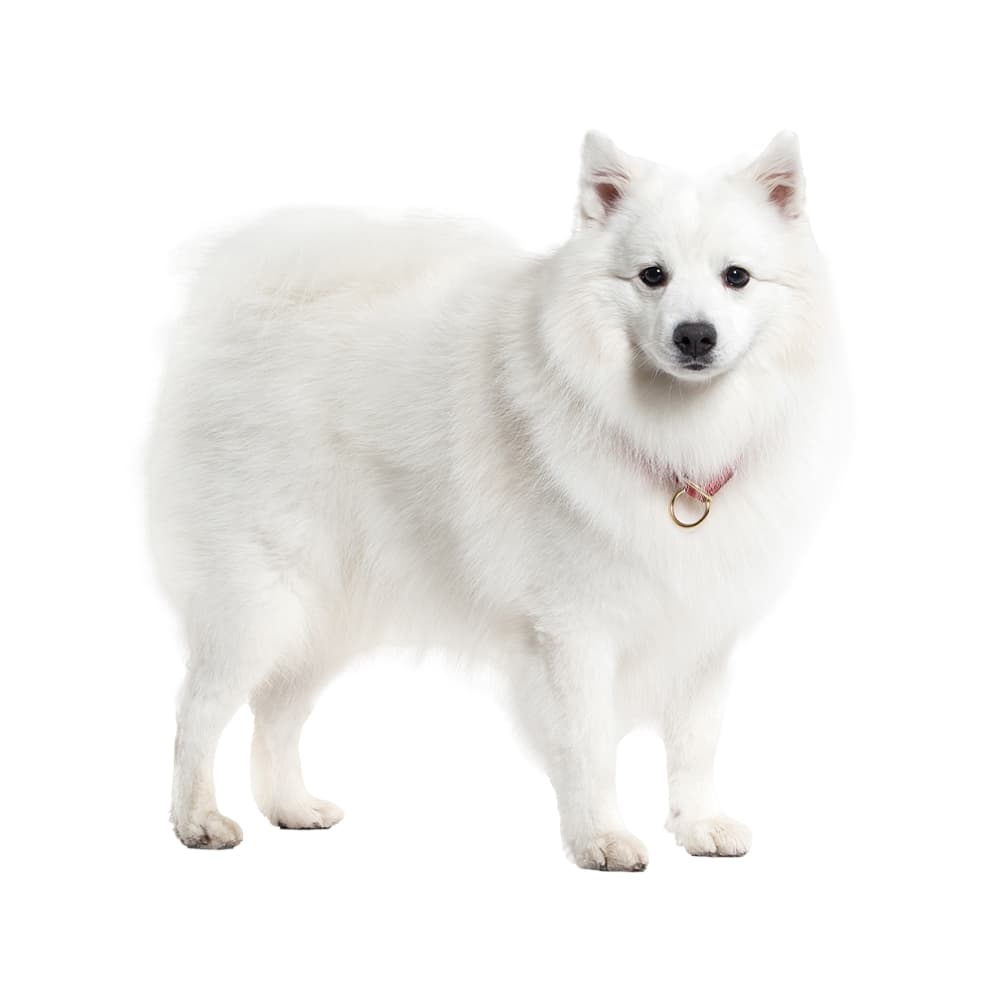Discover your dog's connection to this breed and 200+ others


Discover your dog's connection to this breed and 200+ others



The Japanese Spitz is a relatively new breed that originated in Japan in the late 19th to early 20th century. The exact lineage of the breed is somewhat uncertain, but it's widely believed to have been developed by breeding various Spitz breeds imported from around the world, including the white German Spitz. The breed was officially recognized by the Japan Kennel Club in 1948. In the years following World War II, the Japanese Spitz gained popularity across the globe, becoming known for its companionable nature and elegant appearance. As a breed, Japanese Spitz dogs exhibit strong genetic traits of the Spitz-type, characterized by a fox-like appearance, pointed ears, and a thick, dense coat.
The Japanese Spitz is a generally healthy breed, but can suffer from patellar luxation. Genetic conditions for which they can be tested include progressive retinal atrophy (rod-cone dysplasia 4) and Factor VII Deficiency. As for all breeds, genetic screening is recommended to assist veterinarians with diagnosis and proactive care, as well as help breeders identify affected and carrier dogs.
Japanese Spitz dogs are known for their friendly, playful, and outgoing nature. They are excellent companion dogs and typically get along well with families, children, and other pets. They are intelligent, easy to train, and can be quite active, requiring regular exercise to keep them happy and healthy. Despite their friendly demeanor, they can also be alert and vocal, making them good watchdogs. However, their barking should not be mistaken for aggressiveness – they are usually simply trying to alert their owners of something unusual.
A canine genetic lineage is a group of individuals or entire breeds that descended from common ancestors predating modern breed formation. Often these lineages are associated with a ‘type’ of dog with a unique historical working role and associated behaviors (e.g., herding, scent hunting, etc.).
Spitz and Sled Dogs originate in the Arctic and subarctic regions which caused them the develop adaptations to cold climates. Some of these adaptations give rise to characteristics of the lineage, most notably a dense double coat that helps with insulation. The lineage of these dogs can be followed back to ancient breeds developed by Indigenous people. These ancient breeds were used as an aid for transportation, herding, guarding, and hunting. These jobs have created dogs that are independent, intelligent and have strong work ethics as well as a sturdy body that helps them to pull sleds or go on long journeys over rough terrain.
Example breeds with ancestry from this lineage include Akita, Chow Chow, and Siberian Husky.
The full history of the Japanese Spitz breed is unknown, as most records were destroyed in World War II.
The Japanese Spitz's thick, double-layered coat is not only beautiful but also highly functional, helping to insulate them against both cold and hot weather.
While they may look high-maintenance due to their fluffy white fur, they are surprisingly easy to groom. Their coat has a somewhat self-cleaning quality, and they typically don't have a strong doggy odor.
They are often mistaken for American Eskimo Dogs or small Samoyeds due to their physical similarities.
https://www.ukcdogs.com/japanese-spitz
https://www.fci.be/Nomenclature/Standards/262g05-en.pdf
https://www.akc.org/dog-breeds/japanese-spitz/
Recommended by top vets with decades of experience
21 breeds
64 genetic health markers
50 genetic trait markers
